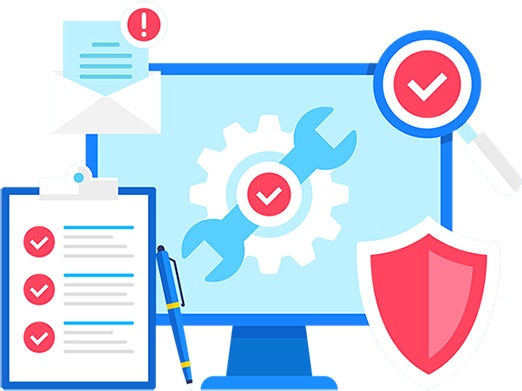Remote Monitoring and Management Explained
The acronym RMM stands for Remote Monitoring and Management. Thus there are two aspects involved- the remote monitoring aspect and the remote management aspect, both of which must be discussed separately.
What's PSA RMM?
PSA (professional services automation) tools play a key role in the workings of any MSP. PSA tools help track customer information, work done, and more. They also generate invoices from the work. A PSA tool is the central repository for all information related to MSP processes, clients, assets, inventory, billing time, and more.
RMM tools help MSPs do the work that PSA tools track. So it's the RMM software that MSPs need to use to remotely connect to clients and complete work. Jobs an RMM can handle include finding work, automating tasks, keeping a tab on systems and devices, etc.
PSA RMM refers to integrating an RMM solution and PSA tool into an MSP infrastructure, thereby helping cut costs and streamline efficiencies. This also helps minimize human errors.
Definition of Remote Management
Remote Management is managing a computer or a network from a remote location. It involves installing software and managing all activities on the systems/network, workstations, servers or endpoints of a client, from a remote location.
About Remote Monitoring
Remote Monitoring (also shortened to RMON) refers to the specification that helps MSPs monitor network operational activities of their clients by using remote devices, which are known as probes or monitors. This helps MSPs ensure efficient network infrastructure control and management.
Major Functions of Remote Monitoring Software
For MSPs
- Helps gather insight about client networks- includes gaining information about machine health and status and supplying reports and data about client systems/networks
- Helps maintain client systems and keep them up to date
- Helps track issues and resolve them remotely. This is done by generating alerts (tickets) and resolving issues
- Helps resolve issues even before clients notice them
- Helps remotely administer patches and install software and updates using a single, unified dashboard
- Helps administer tasks simultaneously to many systems at once from a remote location
- Helps automate scheduled maintenance tasks at clients' locations
For Break-Fix Customers
- Helps resolve issues for break-fix customers who are facing issues pertaining to inconsistent work-flow for the IT provider
- Helps break-fix customers who are facing issues relating to inconsistent income with no recurring revenue model
- Helps break-fix customers who face multiple problems
- Helps resolve minor issues that could lead to bigger issues if unchecked
- Helps resolve issues relating to outdated systems and with irregular updates or upgrades
- Helps resolve issues arising out of data breaches
Benefits of RMM Tool
- Helps small and medium businesses (SMBs) with enterprise-level automation and monitoring
- Helps detect issues before they cause crises or critical system failure
- Helps in the systematic management of clients' IT requirements
- Helps ensure optimal network stability
- Helps enhance performance of clients' systems
- Helps extend life span of clients' systems and devices
- Helps ensure better end-user productivity
- Helps clients get better customer loyalty and satisfaction
- Helps MSPs keep client-related issues under control or avoid issues and thereby ensure higher profit margins
- Helps MSPs expand their client base and provide better service
